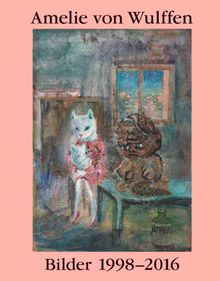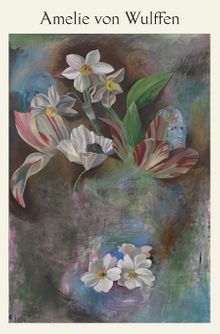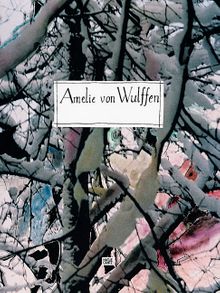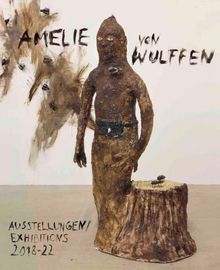ARTIST MONOGRAPHS
|
|
in stock $39.95 Free Shipping UPS GROUND IN THE CONTINENTAL U.S. |
 Amelie von Wulffen: Works 1998–2016
Amelie von Wulffen: Works 1998–2016
Published by Koenig Books.
Edited by Isabel Podeschwa, Bernhart Schwenk, Joe Scotland, Amelie von Wulffen. Text by Manfred Hermes, Bernhart Schwenk, Amy Sillman.
For more than 20 years, the artist has been developing a formally and stylistically diverse oeuvre (including collages, installations, animated films, drawings, sculptures and paintings) that possesses a remarkable thematic consistency. Amelie von Wulffen: Works 1998–2016 shows the artist returning again and again to the process of coming to terms with the repercussions of German cultural history. These heavy themes are lightened by an acid humor, most obvious in Wulffen’s drawings and comics, which spares no sacred cows. Richly illustrated with texts by Bernhart Schwenk and Amy Sillman, Amelie von Wulffen: Works 1998–2016 presents the painter as a role model for a younger generation of artists.
PUBLISHER
Koenig Books
BOOK FORMAT
Flexi, 9.25 x 12 in. / 328 pgs / 230 color.
PUBLISHING STATUS
Pub Date 7/25/2017
Active
DISTRIBUTION
D.A.P. Exclusive
Catalog: FALL 2017 p. 138
PRODUCT DETAILS
ISBN 9783960980605 FLAT40
List Price: $49.95 CAD $67.50
AVAILABILITY
In stock
in stock $49.95 Free Shipping UPS GROUND IN THE CONTINENTAL U.S. |
 Amelie von Wulffen
Amelie von Wulffen
Published by Aspen Art Press.
Foreword by Cay Sophie Rabinowitz. Text by Heidi Zuckerman Jacobson.
PUBLISHER
Aspen Art Press
BOOK FORMAT
Paperback, 6.25 x 9 in. / 88 pgs / illustrated throughout.
PUBLISHING STATUS
Pub Date 1/31/2013
Active
DISTRIBUTION
D.A.P. Exclusive
Catalog: SPRING 2013 p. 122
PRODUCT DETAILS
ISBN 9780934324618 TRADE
List Price: $20.00 CAD $27.95 GBP £17.50
AVAILABILITY
In stock
in stock $20.00 Free Shipping UPS GROUND IN THE CONTINENTAL U.S. |
 Amelie Von Wulffen
Amelie Von Wulffen
Published by Hatje Cantz.
Edited by Philipp Kaiser and Rita Kersting. Essays by Manfred Hermes, Philipp Kaiser, Josef Strau.
PUBLISHER
Hatje Cantz
BOOK FORMAT
Hardcover, 8.75 x 10.5 in. / 144 pgs / 100 color.
PUBLISHING STATUS
Pub Date 10/15/2005
Out of print
DISTRIBUTION
D.A.P. Exclusive
Catalog: FALL 2005 p. 136
PRODUCT DETAILS
ISBN 9783775716345 SDNR30
List Price: $45.00 CAD $55.00
AVAILABILITY
Not available
STATUS: Out of print | 11/28/2010 For assistance locating a copy, please see our list of recommended out of print specialists |

